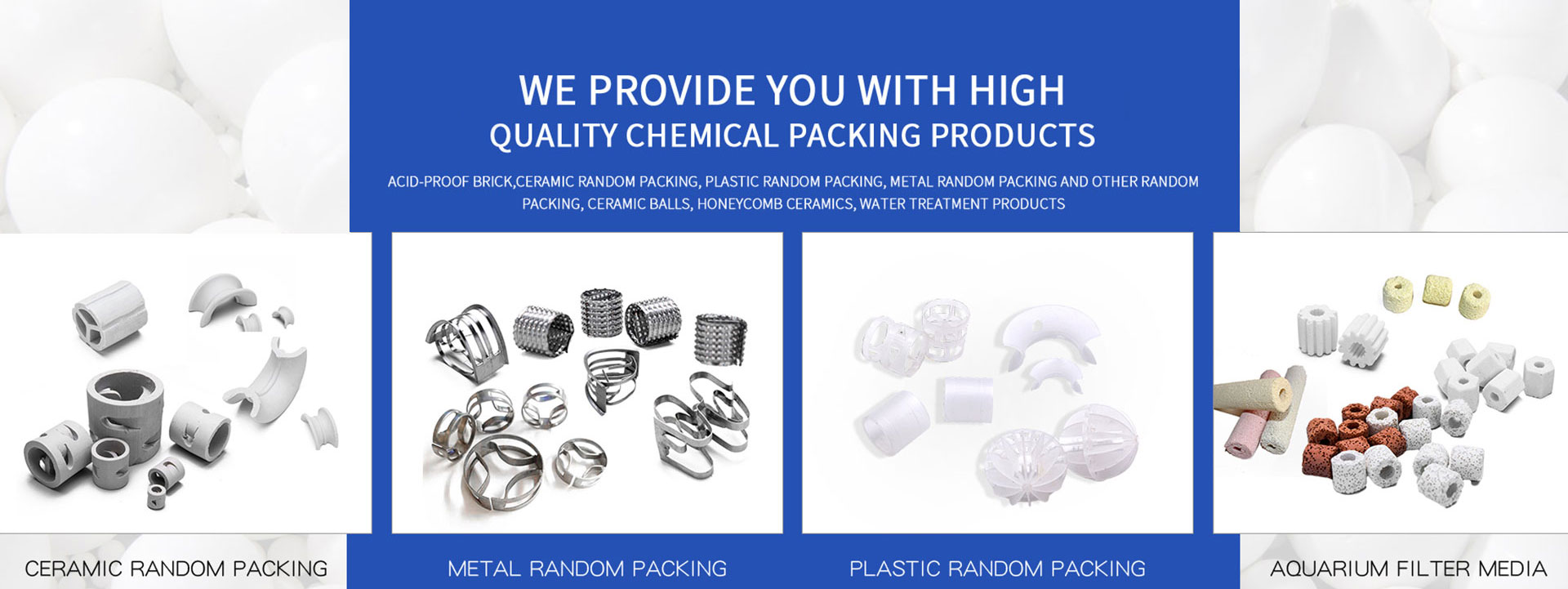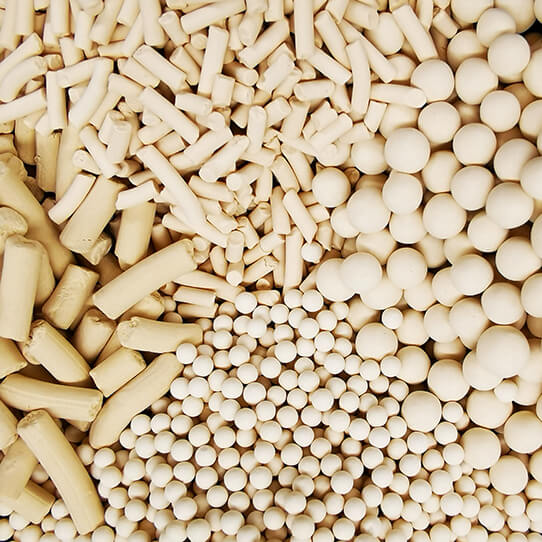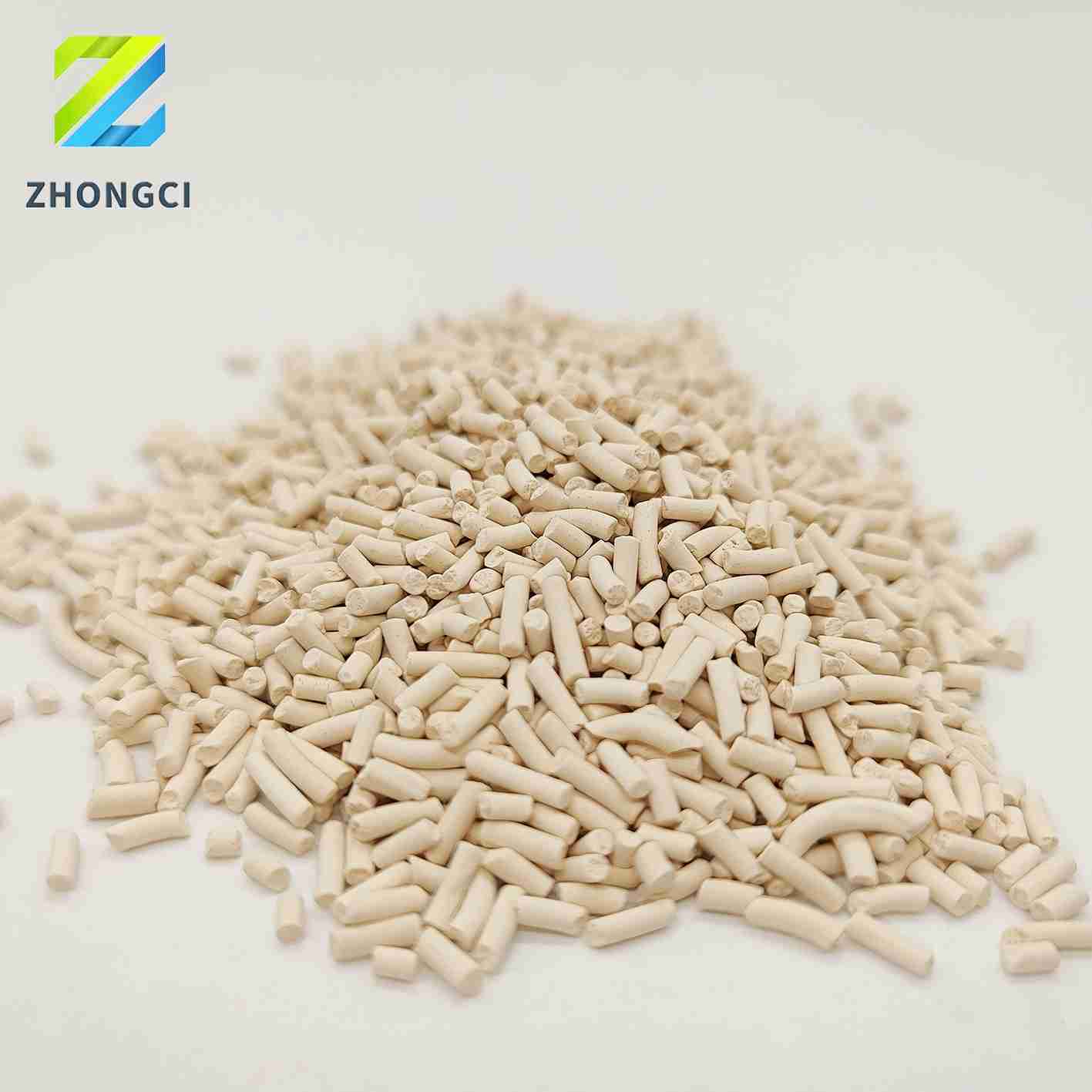


5a molecular sieve
5A Molecular Sieve is a type of synthetic zeolite that is derived from natural aluminosilicate minerals through a controlled manufacturing process.
Synthesis of Zeolite 4A
Zeolite 4A is first synthesized from sodium aluminate and sodium silicate under controlled temperature and pH conditions.
Ion Exchange Process
The sodium (Na⁺) ions in the zeolite 4A structure are replaced with calcium (Ca²⁺) ions, converting it into 5A molecular sieve.
Drying & Activation
The material is dried at high temperatures to remove residual moisture.
Shaping & Granulation
The molecular sieve is processed into pellets, beads, or powders depending on its final application.
Quick Details

The 5A Molecular Sieve is a highly efficient synthetic zeolite with a pore size of 5 angstroms (5Å). It is designed for adsorption and separation processes, selectively removing molecules with a kinetic diameter of 5Å or smaller while excluding larger molecules. This makes it ideal for applications in gas purification, drying, and separation processes.
Selective Adsorption
Efficiently removes normal paraffins, water, CO₂, H₂S, and other small molecules while allowing larger molecules to pass through.
High Adsorption Capacity
Superior ability to capture moisture, gases, and hydrocarbons, making it useful for dehydration and gas separation.
Excellent Mechanical Strength & Durability
Withstands high pressure and temperature conditions without structural degradation.
Regenerable & Reusable
Can be regenerated by thermal activation or pressure swing adsorption (PSA), ensuring long service life.
Stable Performance in Harsh Conditions
Highly resistant to chemical attack and thermal stress, making it ideal for industrial applications.
Petrochemical & Natural Gas Processing
Removal of H₂O, CO₂, and H₂S from natural gas.
Separation of normal and iso-paraffins in hydrocarbon refining.
Air Separation & Oxygen Generation
Used in pressure swing adsorption (PSA) systems for oxygen enrichment.
Liquid & Gas Drying
Dehydration of liquefied petroleum gas (LPG), compressed air, and solvents.
Hydrogen Purification
Removes water and CO₂ to produce high-purity hydrogen.
<< Previous page
Next page >>